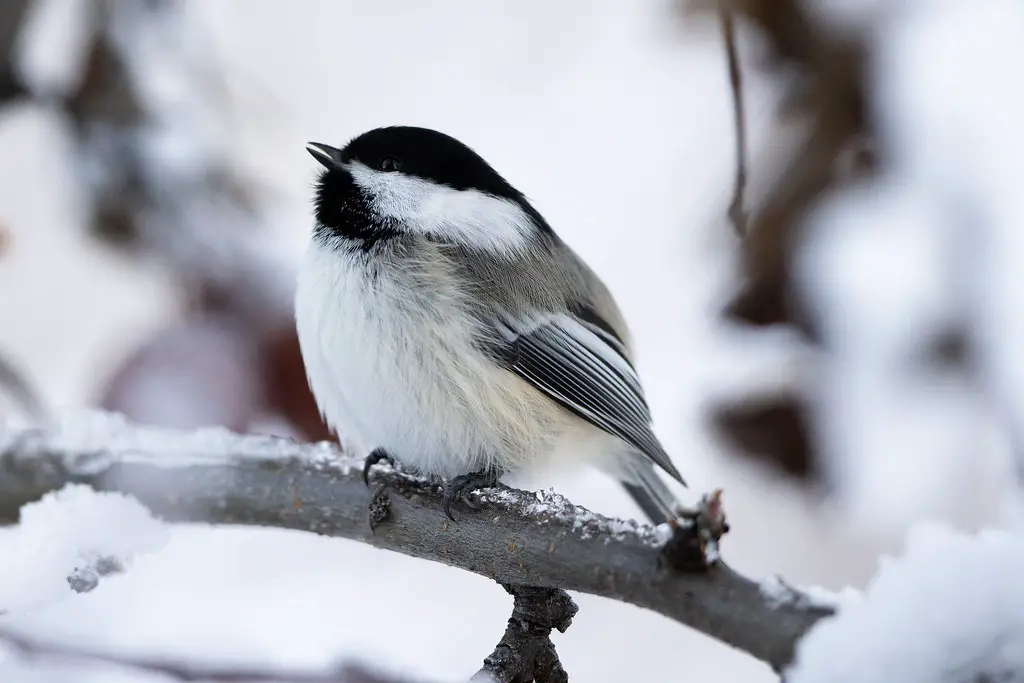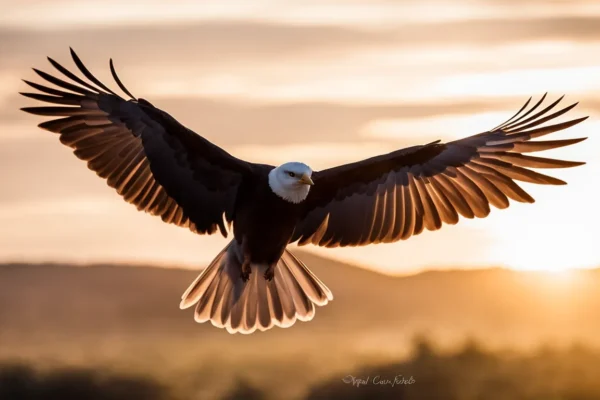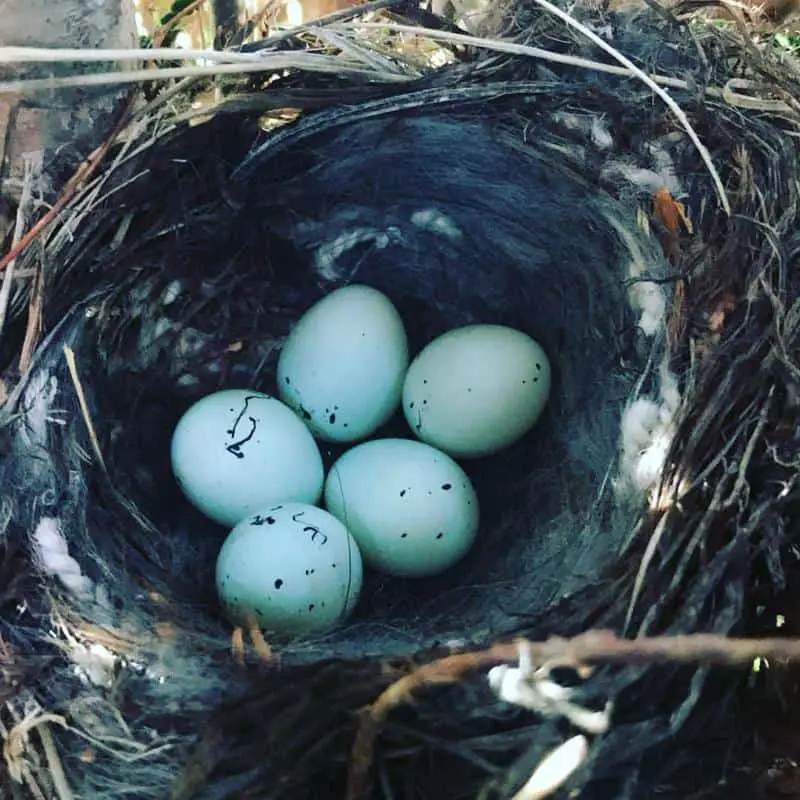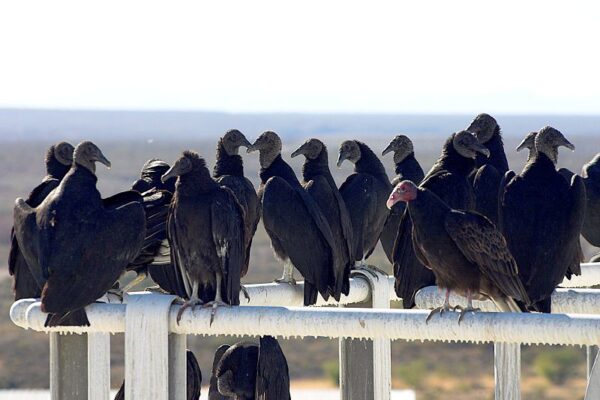Many little black birds may first resemble tiny crows due to their jet black feathers. Some species, meanwhile, are really smaller members of the songbird family found in parks and backyards all throughout North America.
This is a simple response in case you’re pressed for time: Smaller than crows, blackbirds, cowbirds, starlings, black-capped chickadees, and grackles are some of the common black birds.
We will cover important identifying traits, size comparisons with crows, habitat and range details, and fascinating facts about some of the most common black bird species that are smaller than crows in this guide.
You will be able to correctly identify these little black birds with the use of helpful images, charts, and professional recommendations.
Common Small Black Birds
Black Phoebe

Image Source
- Scientific name: Sayornis nigricans
- Lifespan: Up to 8 years
- Size: Approximately 16-19 centimeters (6.3-7.5 inches)
- Origin: North America (found in regions such as the United States and Mexico
Black Phoebe is a small passerine bird native to western North America. It belongs to the flycatcher family and is known for its sleek black plumage and distinctive tail-wagging behavior. Here is a short description of the Black Phoebe’s behavior and habitat:
Behavior:
Black Phoebes are highly territorial birds and can often be seen perched on low branches or rocks near water bodies, such as streams, rivers, or ponds. They are primarily insectivorous and feed on a wide variety of flying insects, including flies, bees, and beetles. Black Phoebes employs a unique hunting technique by perching and sallying out to catch their prey in mid-air. They also occasionally catch insects from the ground or vegetation.
One of the most notable behaviors of the Black Phoebe is its tail-wagging motion. It constantly flicks and pumps its tail up and down, which is believed to be a form of communication or a display of territoriality. This behavior helps distinguish the Black Phoebe from other similar-looking species.
Habitat:
Black Phoebes inhabit a range of habitats in western North America, including riparian areas, open woodlands, suburban areas, and even urban environments. They have a preference for locations near water, as it provides a steady source of insects for their diet. They are often found near streams, ponds, and other water bodies, where they perch on rocks, branches, or man-made structures like bridges.
When it comes to nesting, Black Phoebes construct cup-shaped nests made of mud, plant fibers, and grasses. They typically place their nests on sheltered ledges, cliffs, or man-made structures like buildings or bridges. The female lays a clutch of 3-5 eggs, which are incubated by both parents. Once the chicks hatch, both parents participate in feeding and caring for the young.
Black Phoebes are non-migratory birds, although some individuals may move to lower elevations during the winter months in search of milder climates and better food availability.
Solitary Cacique

- Scientific name: Cacicus solitarius
- Lifespan: About 6-8 years
- Size: Medium-sized songbird; approximately 9-11 inches (23-28 cm) in length
- Origin: Found in Central and South America
The solitary cacique is a unique bird with a white beak found in the tropical Americas. Males are larger, measuring about 10.6 inches, while females are slightly smaller at about 9 inches. They have all-black plumage except for their creamy white triangular bill, long tail, and dark eyes.
Solitary caciques inhabit open gallery forests and flooded areas of the Amazon, where they feed on spiders, fruits, and seeds. They are generally shy birds that prefer to stay hidden in the trees, but they can also be quite aggressive towards other birds when defending their territory. The males sing a clear song from an exposed perch to mark their territory, and they build cup-shaped nests from thin twigs lined with grass or leaves.
Red-rumped Cacique

- Scientific name: Cacicus haemorrhous
- Lifespan: Typically 5-7 years
- Size: Medium-sized songbird; around 12-14 inches (30-36 cm) in length
- Origin: Found in Central and South America
The red-rumped cacique is a relative of the solitary caciques. Male red-rumped caciques are about 11.4 inches in size, while female birds are slightly smaller at about 9.8 inches. Like other members of their family, they have all-black plumage, but they are called red-rumped caciques because of the red plumage on their back close to the tail, which is visible when they spread their wings. Their bills are creamy white in color.
Red-rumped caciques are found in tropical swamp forests and moist lowland forests, breeding from Panama to Bolivia and Brazil, and also in Trinidad. Their nests are deep cups made of sticks lined with softer material, built low in trees. They lay 3-4 slightly spotted whitish eggs, which are incubated for 14 days to hatching, with a further 16–17 days to fledging.
Phainopepla

- Scientific name: Phainopepla nitens
- Lifespan: Typically around 5 to 10 years
- Wingspan: Approximately 25 to 30 cm (9.8 to 11.8 inches)
- Native to: Southwestern United States and Mexico.
The Phainopepla is a small, striking songbird native to the southwestern United States and parts of Mexico. Adult Phainopeplas have a distinctive appearance with predominantly glossy black plumage. Males have bright red eye patches, while females have more subdued gray eye patches.
These birds are often found in desert and arid scrubland habitats, including mesquite woodlands. They are primarily insectivorous, feeding on a diet of insects and other small invertebrates, as well as berries and fruit.
Phainopeplas are appreciated for their unique appearance and their melodious, flute-like calls. They are agile fliers and are known for their aerial foraging, capturing insects on the wing. They are a charismatic species often associated with desert habitats.
Red-winged Blackbirds
In Michigan, one may often see Red-winged Blackbirds, which are distinguished by their eye-catching look and unique cry. It is distinguished from other bird species by its striking red shoulder patches and black feathers. The melodious singing of male Red-winged Blackbirds reverberates over wetlands and marshes, and they are bigger than females. During the mating season, these birds are quite protective of their nesting places and may be spotted perched on cattails and other tall plants.
When making territorial displays, the male Red-winged Blackbird flaunts his red shoulder patches and black plumage.
The main food sources for Red-winged Blackbirds are insects, seeds, and grains. Being omnivores, they will consume fruits and berries when they are available. They gather in big flocks throughout the winter and feed in fields and other agricultural areas. Being expert pilots, these birds are often seen doing acrobatic feats, effortlessly swooping through the skies.
Distribution and Habitat
In Michigan, red-winged blackbirds are mostly found in wetland habitats including bogs, swamps, and marshes. These birds are versatile and may be seen in meadows, roadside ditches, and agricultural areas. There are colonies of these birds from Alaska to Florida, and they are widespread across North America.
Tips for Watching Red-winged Blackbirds
Search for male Red-winged Blackbirds with their red shoulder patches resting on cattails or other tall plants.
Pay attention to their unique song, which consists of a string of notes followed by a throaty grumble.
For the greatest chance of seeing these birds during the nesting season, go to agricultural fields and wetland regions.
Common Grackle
The glossy black birds known as grackles have golden eyes and long tails. They inhabit a range of environments, including as urban areas, open fields, and forests. Due to their extreme adaptability, these birds are often seen searching for food in trees or on the ground.
The diversified food of common grackles includes fruits, seeds, insects, and even small animals. They are distinguished by their boisterous cries and propensity to congregate in big flocks.
Brown-Headed Cowbird
Small black birds with a distinctive brown head and a stocky physique are known as brown-headed cowbirds. Because they don’t construct their own nests, these birds are well-known for their unusual breeding habits. Rather of laying their eggs in other bird species’ nests, female cowbirds leave their young for the host bird to nurture.
There are several locations where brown-headed cowbirds may be found, such as grasslands, woodlands, and agricultural regions.
Starlings
Small black birds with glossy plumage flecked with white in winter are known as European starlings. Since their introduction to North America in the 1800s, these birds have grown to be among the most numerous on the continent.
Due to their great degree of adaptability, European starlings may be found in a variety of environments, including forests, farms, and cities. They are renowned for their capacity for mimicry and their ability to copy the melodies of many bird species.
Gray Catbird

Image Source
- Scientific name: Dumetella carolinensis
- Lifespan: Up to 10 years
- Size: Approximately 22-24 centimeters (8.7-9.4 inches)
- Origin: North America (found in regions such as Canada, United States, and Mexico)
The Gray Catbird is a medium-sized songbird found in North America. It is known for its distinct gray plumage, the black cap on its head, and its ability to mimic the calls of other birds. Here is a short description of the Gray Catbird’s behavior and habitat:
Behavior:
Gray Catbirds are highly vocal birds and are known for their melodic songs, which often include a mix of original notes and imitations of other bird species. They have a wide range of calls and can mimic the songs of over 50 different bird species. Their vocalizations serve various purposes, including territorial defense and attracting mates.
In terms of feeding, Gray Catbirds are omnivorous. They primarily eat insects, berries, fruits, and seeds and are adept at foraging on the ground, in shrubs, and even in trees, using their bill to probe for food items. They are known to flick their wings and tail when agitated or excited.
Habitat:
Gray Catbirds are commonly found in thickets, shrubby areas, and woodland edges across North America. They prefer habitats with dense vegetation, such as tangled undergrowth and shrubs, which provide ample cover for nesting and foraging. They can also be found in gardens, parks, and suburban areas with suitable vegetation.
During the breeding season, Gray Catbirds construct cup-shaped nests made of twigs, leaves, and grasses, usually hidden within dense shrubs or vines. They lay a clutch of 3-5 eggs, which are incubated by the female for about two weeks. Both parents participate in raising the chicks until they fledge and become independent.
Black-capped Chickadee

Image Source
- Scientific name: Poecile atricapillus
- Lifespan: 2-12 years
- Size: 12-15 centimeters (5-6 inches)
- Origin: North America
Small black and white birds with a characteristic black hat and bib are called black-capped chickadees. All in North America, woods and woodlands are frequent habitats for these birds. It is well known that black-capped chickadees are amiable and inquisitive birds that often approach people out of curiosity.
They eat a wide variety of foods, including as berries, seeds, insects, and even tiny animals. The distinctive vocalizations of these birds, such as their distinguishing “chick-a-dee-dee-dee” call, are also well-known.
How to Spot Little Black Birds
Due to their shared traits, little black birds may be difficult to recognize. You may, however, increase your confidence in your ability to differentiate between different species by paying attention to certain criteria. The following advice will assist you in recognizing little blackbirds:
Comparing Sizes
Size may be a useful indicator for distinguishing little black birds. You may get a better idea of the bird’s proportions by comparing its size to items that you are acquainted with. For instance, blackbirds and sparrows are little black birds that are often smaller than crows.
You may reduce the number of choices by noting how big they are in comparison to other birds.
The Audubon Society states that blackbirds and sparrows often measure between five and eight inches in length, but crows are typically between seventeen and twenty-one inches long. You can tell these species apart because to their notable size differences.
Differentiating Marks and Features
Even while little black birds can first seem identical, they often have distinguishing characteristics or markings that help you recognize them. Observe the bird’s eye color, beak form, and any distinctive feather patterns.
The red-winged blackbird, for instance, is a little black bird that can be clearly identified from other species thanks to a conspicuous red patch on its wings.
Some little black birds have iridescent plumage, like the common grackle, which seems black from a distance but exposes vivid colors up close. You may identify the particular species you’re viewing by paying attention to these traits.
Rings and Melodies
Small black birds’ cries and songs may often provide important identifying cues. Every species has distinct vocalizations that might differ in rhythm, tone, and pattern. Through close observation of the bird’s cries or songs, you may reduce the number of potential options.
You may listen to recordings of bird noises and compare them to the sounds you hear in the field using online resources like the All About Birds website from the Cornell Lab of Ornithology, which has large databases of bird sounds.
Based on vocalizations, this may be a useful tool for recognizing little black birds.
Recall that it might be difficult to detect little blackbirds, particularly for novices. You may, however, become better at distinguishing one species from another with practice and close attention to detail. Cheers to more bird-watching adventures!
Getting Little Black Birds to Land in Your Yard
Three main factors are important to consider if you’re a bird enthusiast hoping to get little black birds to your yard: food options, water sources, and shelter. These necessities will help you create a welcoming space that will attract these lovely animals to your yard, where they may decide to make their home.
Food Supplies
Providing a range of food options for little black birds is one of the best strategies to draw them in. Because the diets of these birds vary, offering a variety of items will boost your chances of drawing in a variety of species. Several well-liked choices to think about are:
High in nutrients, black oil sunflower seeds are a favorite among many little black birds, including house finches and black-capped chickadees.
Suet: Nuthatches and woodpeckers especially like suet, which is a high-energy diet.
Fruit: To attract birds like American robins and cedar waxwings, provide pieces of apples, oranges, or berries.
Mealworms: A wonderful complement to your bird feeder, mealworms are adored by many insect-eating birds.
You may attract a broad assortment of little black birds to your yard by offering a range of these food alternatives.
Water Resources
It is essential to provide a steady supply of water to draw in birds of all types, particularly little black birds. To provide these birds with a place to drink and wash, think about adding a bird bath or a small pond to your yard.
Keep the water fresh and clean by changing it often to stop bacteria or algae from growing.
To guarantee that there is always water accessible, think about making an annual investment in a heated bird bath if you live in a region where cold temperatures are typical. Small black birds will find your yard even more appealing as a result throughout the winter months.
Coverage
Providing cover is a crucial element in drawing little black birds to your yard. These birds need locations for nest-building, resting, and hiding from predators. Here are several methods you may use to provide shelter:
Plant native plants and trees that will provide little birds shelter and food.
Install birdhouses made especially for little birds, such as titmice or chickadees.
To create natural hiding places in your yard, leave fallen logs or brush piles.
Providing a range of shelter choices can make it more likely that little black birds will decide to visit your yard.
Remember that it could take some patience and effort to get little black birds to visit your yard. If you consistently provide food, water, and shelter, you’ll eventually reap the rewards of having these exquisite birds grace your yard with their presence.
Final Thoughts
Even while ravens and crows are the biggest and most well-known black birds, it may be as satisfying to watch the tiny songbirds with black feathers that live in our neighborhoods. Anyone may become an expert identifier of these delightful backyard guests by learning the main characteristics, habits, noises, and favorite habitats of species such as grackles, blackbirds, cowbirds, starlings, and chickadees.
You’ll be able to easily identify and recognize the variety of black birds smaller than crows in your area if you use the advice and profiles in this guide.










